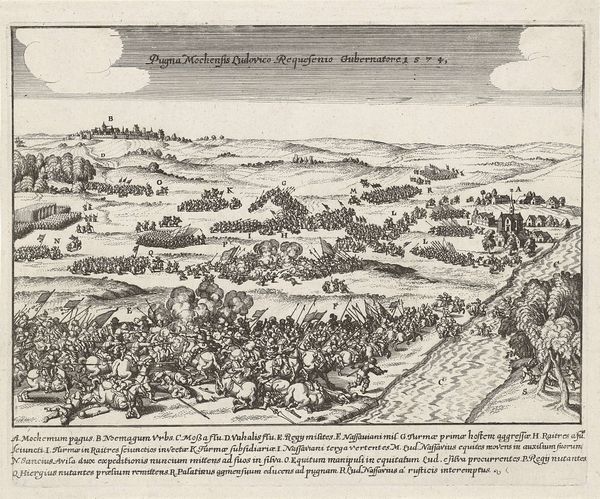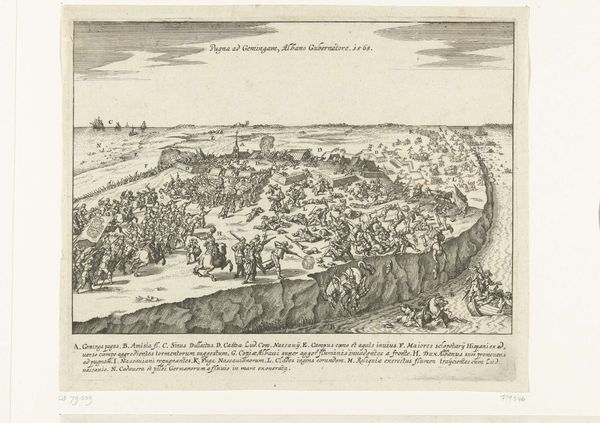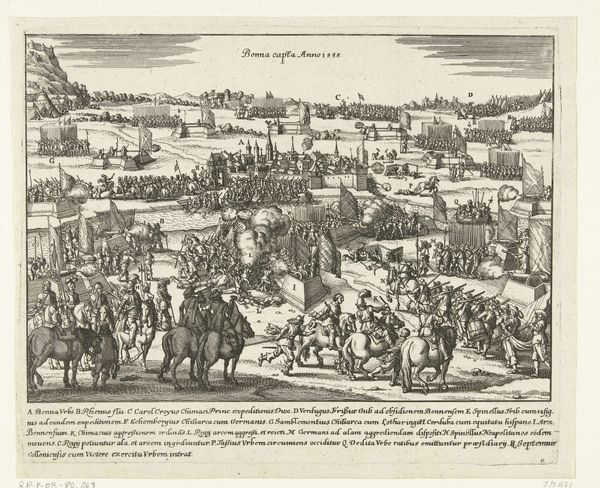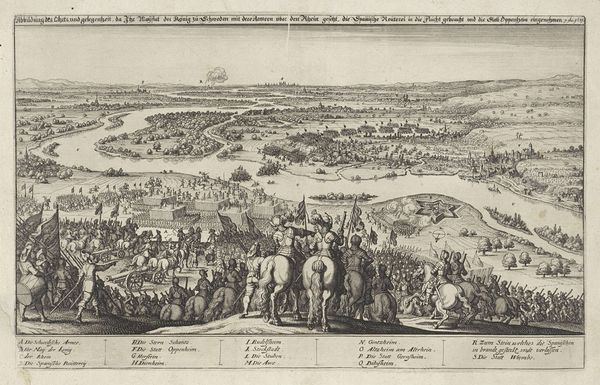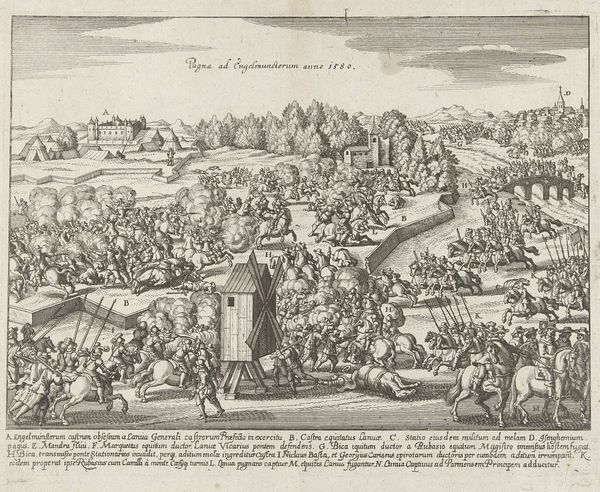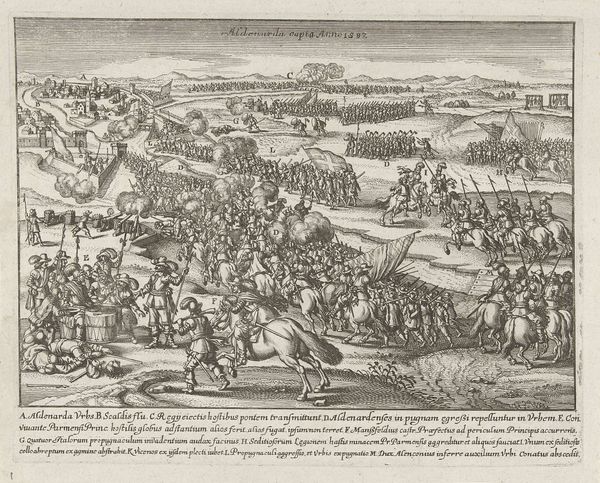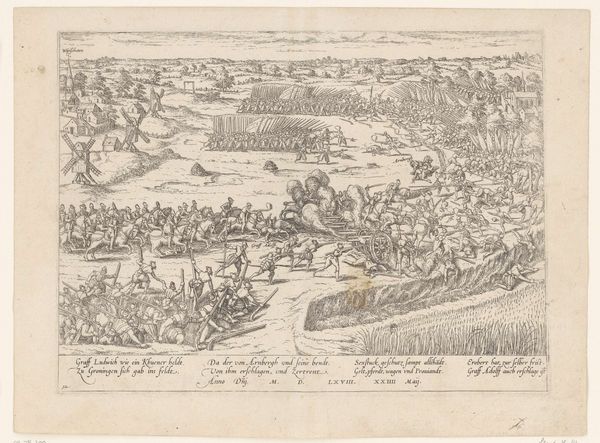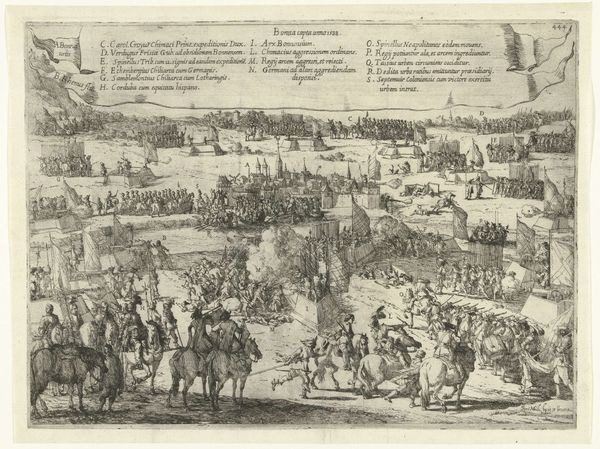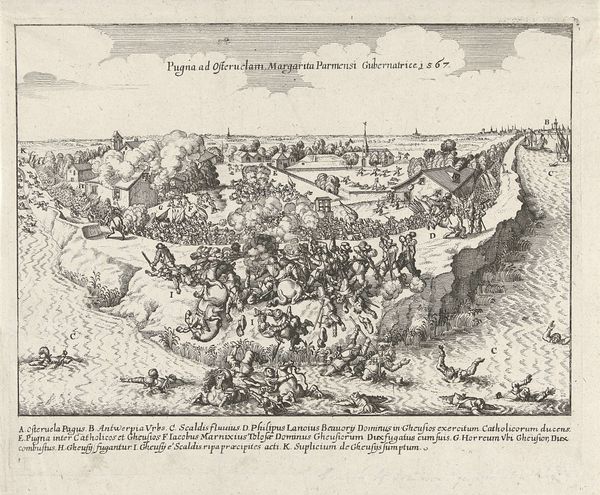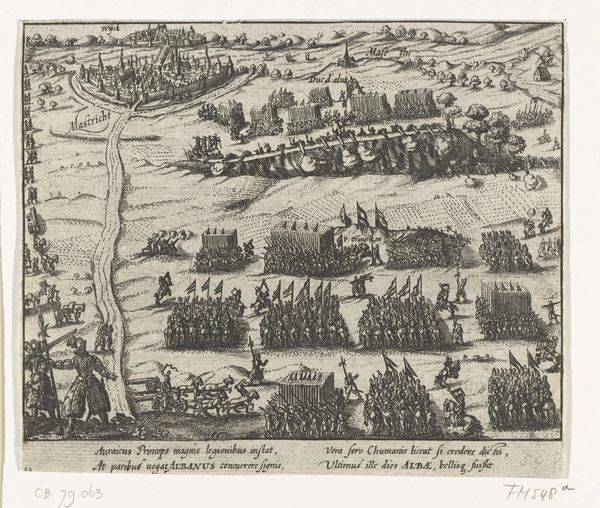
print, engraving
#
narrative-art
#
baroque
# print
#
old engraving style
#
landscape
#
form
#
line
#
history-painting
#
engraving
Dimensions: height 220 mm, width 272 mm
Copyright: Rijks Museum: Open Domain
Curator: Here we have an engraving titled "Veldslag bij Engelen, 1587," or "Battle of Engelen, 1587". Though it depicts an event from 1587, it was created much later, sometime between 1649 and 1651. It resides in the collection of the Rijksmuseum. Editor: My initial impression? It's a chaotic swirl of lines. A dizzying array of figures dominates the scene. The contrast of dark ink on light paper creates a rather dramatic, almost overwhelming visual effect. Curator: Indeed, the image captures a pivotal moment in Dutch history, specifically, a skirmish during the Eighty Years’ War. This piece would have served as propaganda, bolstering morale. Look closely and note the emphasis on the strategic positioning of the armies and the suggestion of Dutch fortitude against a foreign aggressor. Editor: From a formal point, observe the way the engraver has used line to create depth. See how the size and density of figures diminishes as your eye moves towards the horizon line, establishing the illusion of receding space? Also note how that choice lends dynamism to the event. Curator: It’s also interesting how the composition, densely populated as it is, directs the viewer's attention through a strategic arrangement of action. Notice the explanatory text at the bottom too: essential to properly framing the political message. The names referenced held weight for the Dutch, reminding the intended audience of key players in that pivotal war. Editor: It seems to lack aerial perspective—everything, near and far, is rendered with relatively equal sharpness and tone, creating this tapestry-like effect across the image. Curator: Yes, this lack of atmospheric perspective is common in prints of this era. The priority here was clarity of information. Every element of the battle is presented for the viewer to study and understand. The primary goal was to meticulously document the historical context, reinforcing nationalistic sentiments through accessible imagery. Editor: I see how the linear texture dominates and the monochromatic nature amplifies a dramatic density and feeling. It evokes an intensity and lends a sense of immediacy despite the events it depicts having transpired so long ago from the point when the artist rendered it. Curator: Ultimately, "Battle of Engelen, 1587" shows how art becomes an important tool to understand Dutch society at a crucial period, and that an engraving served more than aesthetic concerns; it participated directly in shaping public memory. Editor: An excellent example of how seemingly simple compositional choices and artistic approach may influence our perception and imbue this artwork with emotional charge.
Comments
No comments
Be the first to comment and join the conversation on the ultimate creative platform.

